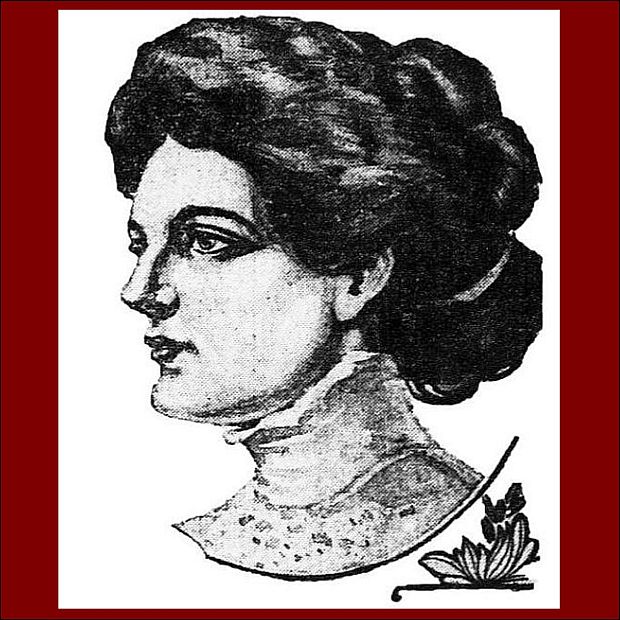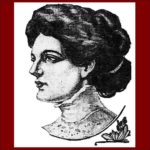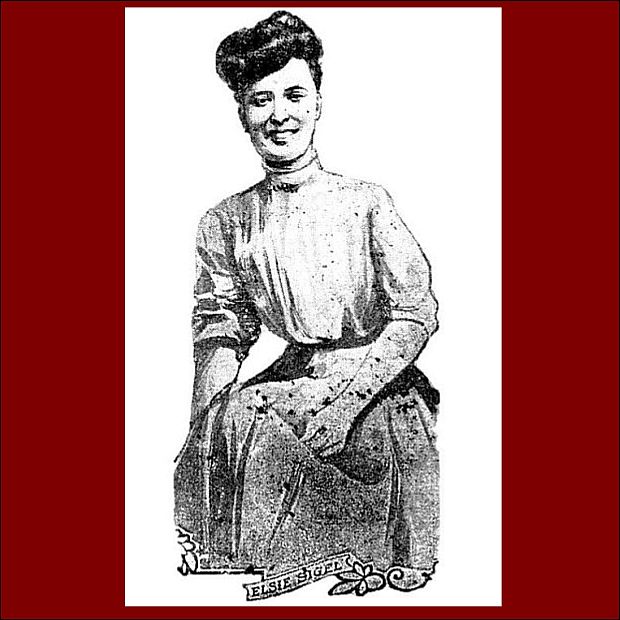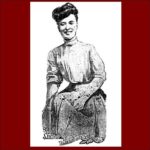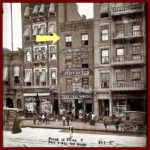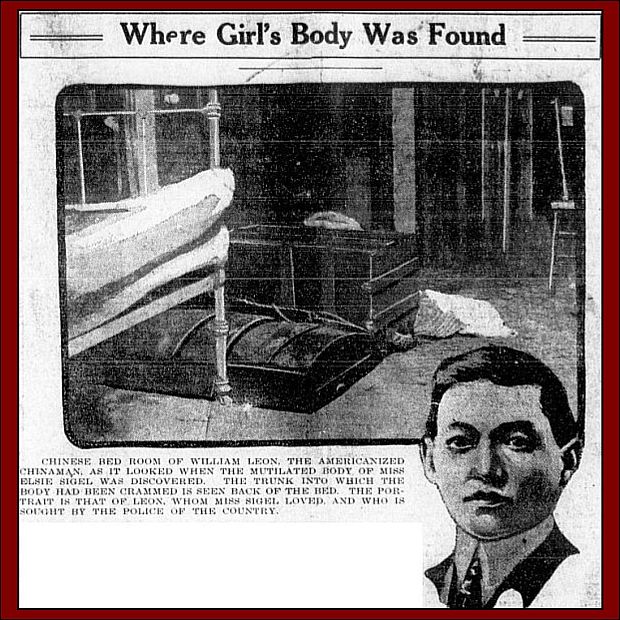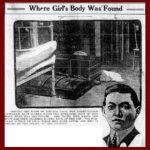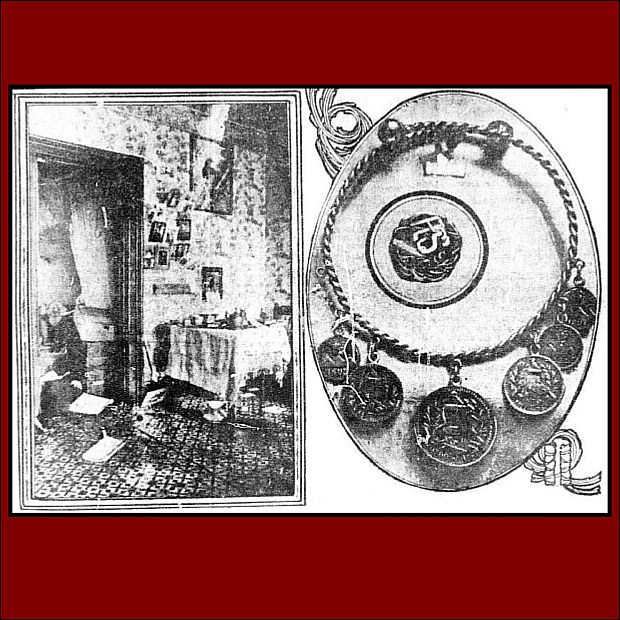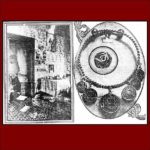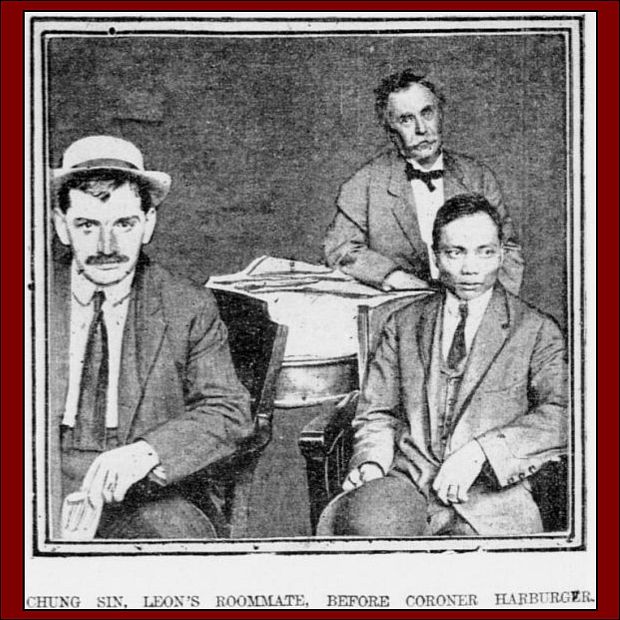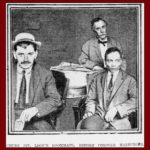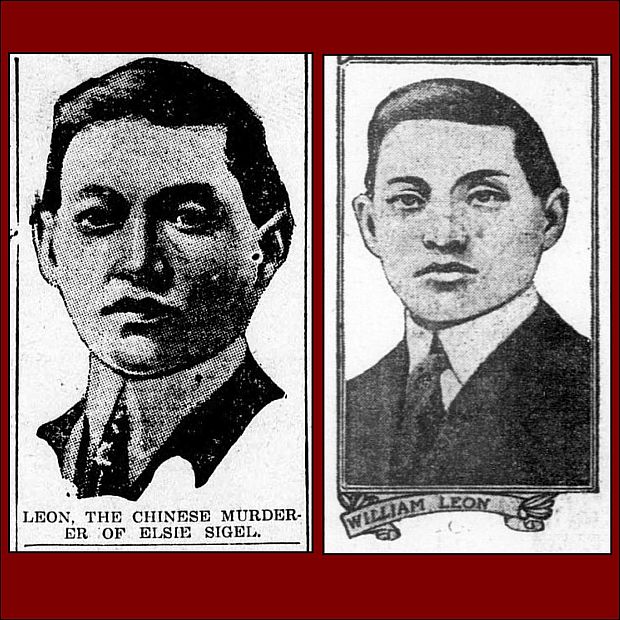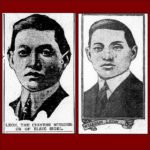The Murder of Elsie Sigel by her Chinese Lover, 1909
A two-page newspaper account of Chong Sin’s
statement to police is located at bottom of this page.
Story by Thomas Duke, 1910
“Celebrated Criminal Cases of America”
Part III: Cases East of The Pacific Coast
Franz Sigel was born in Germany and as a young man he made a brilliant record as a soldier in the Baden revolution. Shortly afterward he came to New York where he soon became very popular, especially with the German-Americans. When the Civil War broke out, he was appointed Colonel, and many of the Germans who volunteered to fight, expressed a desire to fight with Sigel. In recognition of his distinguished services, he was promoted to the rank of Major General.
After the war he became a prominent factor in New York politics, because of the high veneration the German citizens had for him. He served as Collector of Internal Revenue and later as a pension agent. He had four sons, named Rudolph, Robert, Franz and Paul. Rudolph was committed to the insane asylum in Washington in 1904. Robert was convicted of forgery while serving in the pension office under his father, but subsequently was pardoned by President Harrison.
General Sigel died several years ago and a large statue of him was unveiled on Riverside Drive on October 19, 1907. Many of the leading citizens of New York attended the ceremony to do honor to one of the unique figures in American history.
Paul Sigel married a lady who afterward took an active interest in missionary work in the Chinatown of New York. Mrs. Sigel frequently took her daughter Elsie into the Chinese quarters and as the girl grew older she became greatly interested in the work.
On June 9, 1909, Elsie, who was then 19 years of age, disappeared from her father’s home at 209 Wadsworth Avenue. Three days later, Mr. Sigel received a telegram from Washington, D. C., which read:
“I’ll be home by end of week. Don’t worry.
“ELSIE.”
On the afternoon of June 19, 1909, Sun Leung, the proprietor of a chop-suey restaurant located at 782 Eighth Avenue, went to the West Forty-Seventh Street police station and informed the officers that he was worried about his cousin, a young Chinese named Leong Lung, alias William Leon, who had been missing for six days.
He explained that his cousin occupied a room on the top or fourth floor in the same building where the restaurant was located; that the door was locked and that after knocking repeatedly he received no response.
Policeman John Riordan was detailed to accompany the Chinese to the room and institute an investigation.
With the exception of a bed and a trunk bound with rope and evidently prepared for shipping, the room was vacant. After removing the rope the officer opened the trunk, where he found the almost nude body of a well-formed young woman. The body was doubled up and wrapped in a sheet. The woman had evidently been dead at least a week. Around the neck was a light cord similar to those attached to window shades. The body bore no marks of violence. Suspended from a thin gold chain, which was about the girl’s neck, was a bangle, upon which was inscribed the letters “E. C. S.” After a further search in the room a bracelet bearing the initials “E. L. S.” was found.
A cousin of William Leon, named Joe Leon, stated that Elsie Sigel was William’s sweetheart, and that he had seen them together at the theatre.
Captain Carey of the Homicide Bureau was then notified of the discovery. He learned that this room and the one with which it communicated were occupied by William Leon and his friend Chong Sing, both of whom were known as “Americanized” and “Christianized” Chinese. Both men disappeared about the same time, and both could speak English fluently except when “no sabe talk” served their purpose better. Leon was a promoter of Chinese restaurants.
A detective was sent to the Sigel residence. At first the family denied that Elsie was missing, but finally stated that she was out of the city. Mr. Sigel was induced to view the remains. The police say that he acted rather indifferently and that after looking at the remains and jewelry he failed to identify either.
Mrs. Sigel, however, immediately identified the body as the remains of her daughter. She also identified the jewelry.
The photographs of the two missing Chinese were published in the papers, and the press all over America devoted much space to the tragedy.
On June 19, Mr. Harvey Kennedy of Amsterdam applied at an employment agency located at 38 West Twenty-Ninth Street for a cook, and he engaged a Chinaman giving the name of Ah Sing. The next day, Kennedy saw the picture of Chong Sing in the paper, and he at once recognized it as the photograph of his new cook. The police were notified, and when the Chinese man was taken into custody, he reluctantly admitted that he was the party wanted although he denied being implicated in the murder.
For several months, William Leon lived at Sigel’s house, when the family resided at No. 550 West One Hundred and Eighty-Eighth Street.
On the evening of June 1, 1909, eight days before Elsie’s disappearance, Leon called at the West One Hundred and Fifty-Second Street police station and told Lieutenant McGrath that while living at the Sigel residence, he had loaned Mrs. Sigel $300. He also stated that there had been a misunderstanding regarding the debt and as he wanted to go to the house for the sole purpose of getting some of his clothing, he desired an officer to accompany him, so that he would not be accused of going to create trouble.
The request was complied with, and the Chinese obtained his clothes and left the house in a peaceable manner.
A few days after the discovery of the body, Mr. Sigel made the following statement:
“I know that William Leon and Chu Gain, who conducts the Port Arthur Restaurant, were in love with my daughter, and that Leon was insanely jealous.
“On the evening of June 8, there was a party at my house during my absence, and several Chinese were present. Leon came to the party drunk. He called Elsie to one side and told her that if she had anything to do with Chu Gain he would kill them both.”
When interrogated, Chu Gain stated that Leon had threatened to kill him and Elsie because of his attentions to her.
He furthermore stated that about noon on June 9, Chong Sing called on him and stated that Leon would leave the city permanently if furnished with sufficient money for transportation. Believing that he could thus save his life, Chu Gain offered Chong Sing $260, all the money in the place, and the latter, who appeared to be greatly agitated, accepted the amount and hurried away.
Chu Gain was arrested pending further investigation, but was subsequently released.
The following letter, which was evidently written after the party on the night of June 8, was found in Chu Gain’s room:
“June 8, 1909.
“Mr. Chu Gain, Nos. 7-9 Mott Street:
“My Dear Friend—I don’t want you to feel badly because Willie was here tonight. You know that I love you, and you only, and always will. Don’t mind Willie. Although he is nothing to me now, I had to see him last night. I did not send for him.
Your ever loving
“ELSIE.”
In the room where the murdered girl’s body was found, the following letter was also discovered:
“My Dear Willie—I am writing this letter while mother is away from home. She would not let me if she knew about it. Don’t think, Willie, that I will ever give you up. I will always remember the good times we have had together. Please let me know if I can see you soon and how. With love,
“ELSIE.”
Chong Sing made several statements to Captain Carey, giving a little additional information each time.
The following is the substance of his different statements:
“About 10:30 on the morning of June 9, Elsie Sigel called to see Leon for the purpose of reprimanding him for his conduct at the party on the previous evening and also to notify him not to call at the house any more.
“I was downstairs and she went up to the rooms.
“After a while I went upstairs and when I went into one of our rooms I heard a noise in the other room. The door was slightly ajar and I looked through and saw Leon and Elsie struggling. I saw blood on her face and I also saw a handkerchief up to her mouth.
“Elsie was thrown on the bed and lay motionless while Leon ripped off her clothing. He then covered her body with bed clothing and went to the closet and pulled out a trunk. I went into the room at this time and felt the girl’s hand, and Leon said she was dead. I said it was dirty work and that I was going away. I gave him $200 of my money and I then extorted $260 from Chu Gain which I also gave him. I saw him put the body in the trunk. I stayed at my cousin’s house after the murder.”
At the conclusion of the examination of Chong Sing, he was held as a material witness under $10,000 bail.
It was ascertained that a Chinese of Leon’s description sent the telegram from Washington to Mr. Sigel on June 11.
Within an hour after the murder, Leon began to make frantic efforts to dispose of the trunk. About 1 p. m. he appeared at the office of the Constitution Express Company, located at 717 Eighth Avenue, and engaged Driver Arthur Logan to remove the trunk to a laundry at No. 370 West One Hundred and Twenty-sixth Street, where a Chinese named Wah Kee signed for the trunk and paid the expressage.
At midnight, Leon engaged Martin Lauria, a chauffeur, residing at 310 East Fourth Street, to convey him to the laundry in a taxicab.
Leon then had two other Chinamen bring the trunk out and after it was tied to the seat by the driver, Leon instructed Lauria to convey him and the trunk to a Chinese restaurant conducted by Li Sing at 64 Market Street, Newark.
They arrived at the restaurant about 1 a. m. Leon asked that the trunk be left there indefinitely, but as Li Sing refused, Leon returned that afternoon with James Halstead, a cabman, residing at 18 Plum Street, Newark, and the trunk was returned to the room where the murder was committed and where it remained until opened by the police.
It was the theory of Inspector McCafferty that Elsie’s clothing was burned in the stove in Leon’s room.
On September 24, 1909, the Coroner’s jury rendered the following verdict :
“That the said Elsie J. Sigel came to her death on the 9th day of June, 1909, at 782 Eighth Avenue, by asphyxiation, inflicted at the time and place aforesaid at the hands of Leong Lung, alias William Leon.”
As there was not sufficient evidence produced to justify the holding of Chong Sing, he was released after the verdict was rendered.
Notwithstanding the fact that all the leading papers in America and Canada published good pictures of Leon and for many days devoted columns to the case; that the police from the Atlantic to the Pacific made extraordinary efforts to apprehend him, and all ships upon which he could possibly have sailed were carefully searched, no trace of the murderer was ever found.
Download PDF Newspaper Account of Chong Sin’s Statement
—###—


